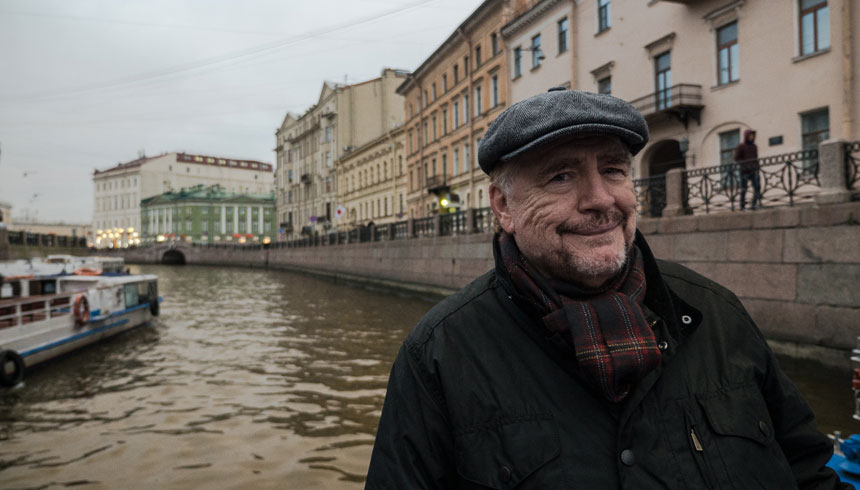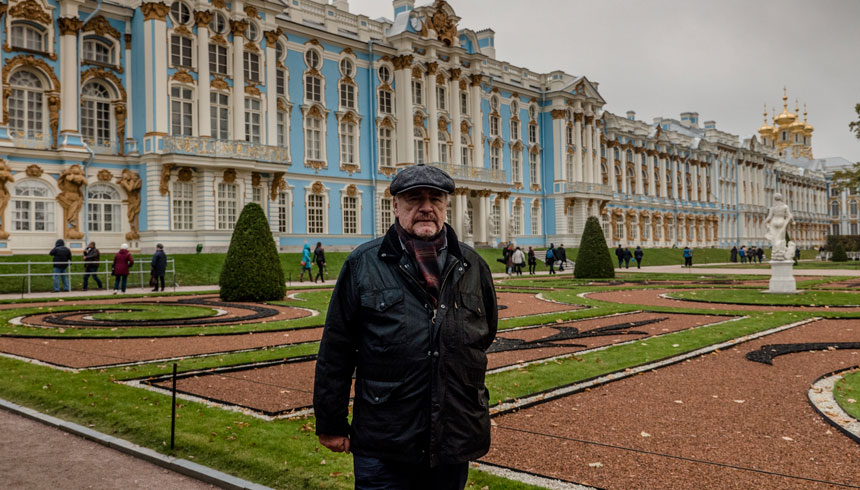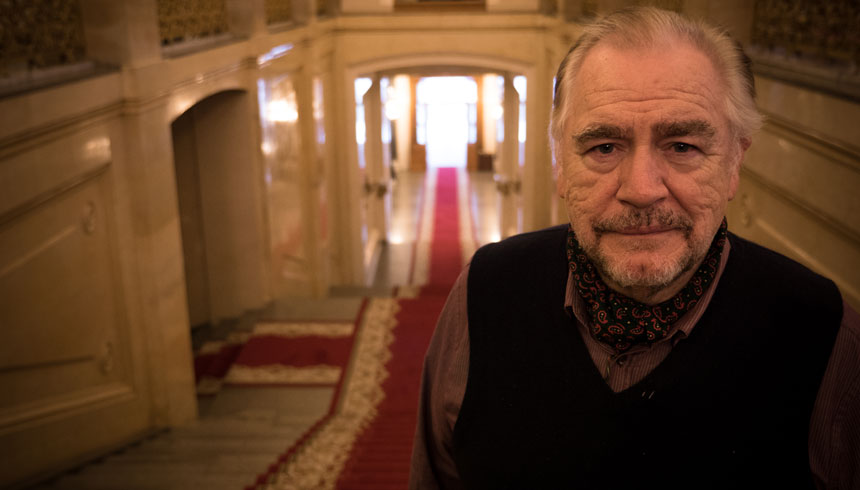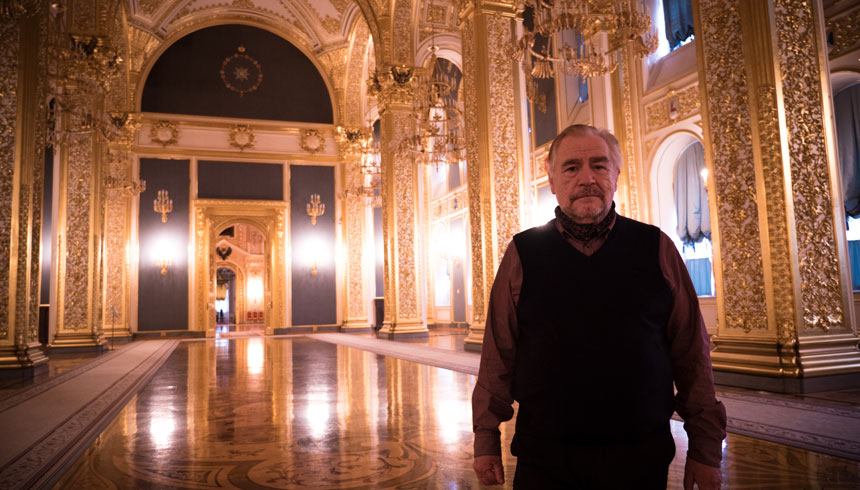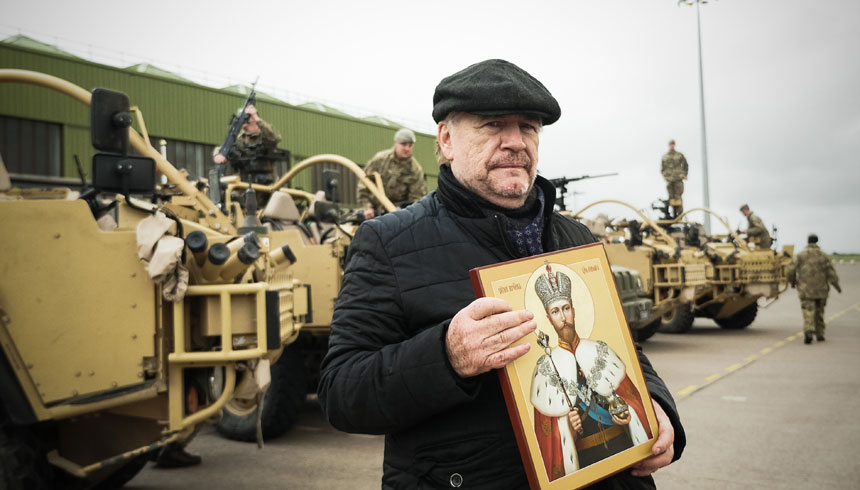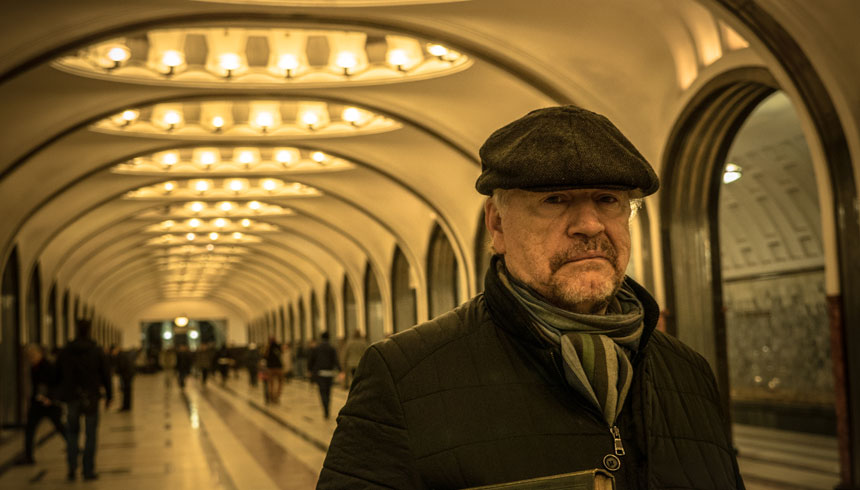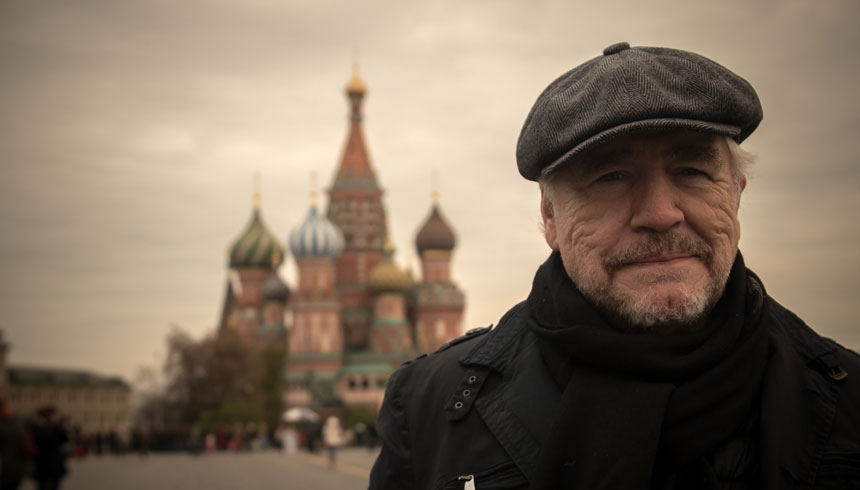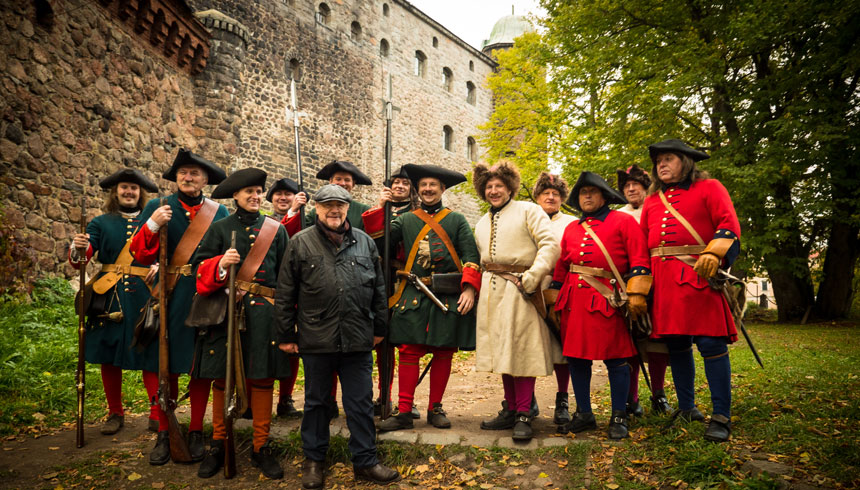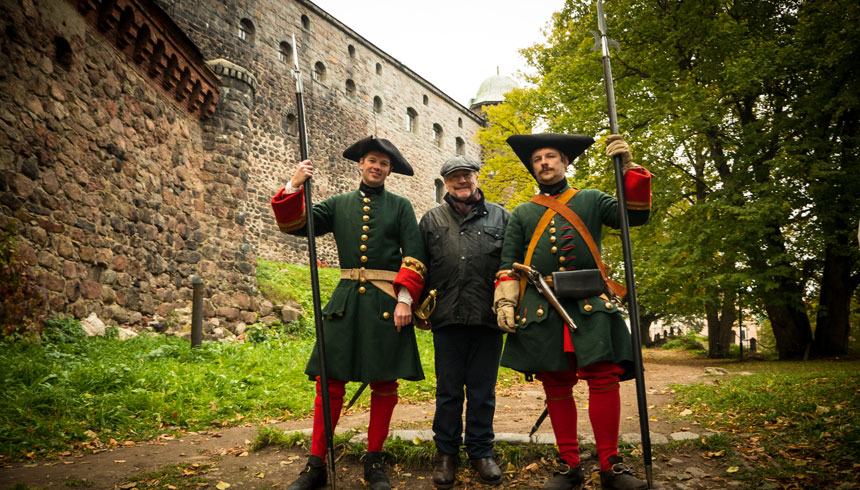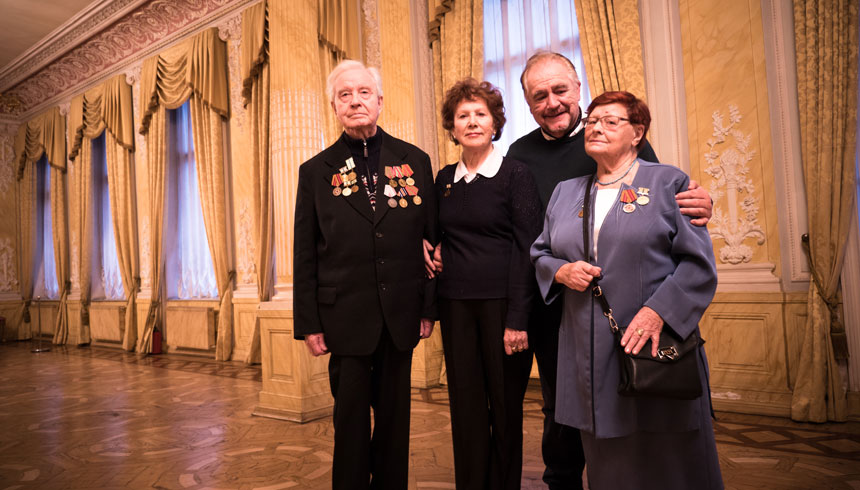- Stephen A Bennett
- 09746 425 017
- vCard
- twitter.com/stephenabennett
- linkedin.com
A self shooting observational documentary producer/director making engaging, thought-provoking films about real people, often filming over extended timeframes.
Brian Cox‘s Russia : Synopsis
- Duration
- 2x 60’
- My Role
- Filmed
- Produced
- Directed
- Exec Producer BBC
- David Harron
- Exec Producer for Hopscotch
- John Archer
- Prod Co
- Hopscotch Films
- Channel
- BBC2 Scotland
- Transmission Date
- 9pm, Tues 18th Apr
- Year
- 2017
Ep 1: Moscow
Brian worked in Moscow in 1987 as Glasnost began to crack open the Iron Curtain. What began as a two-week teaching gig at the famous Moscow Arts Theatre School, transformed into a two-year project and a life long passion for Russia. Thirty years later Brian discovers there’s a long history of Scots coming to this vast country and falling in love with the place.
Brian’s journey begins in Leuchars, Fife at the base of The Royal Scots Dragoon Guards, formerly The Royal Scots Greys. The regiment’s first ever Colonel in Chief was the last Tsar of Russia, Nicholas II, who was brutally assassinated by the Bolsheviks in 1918. In Leuchars, Commanding Officer, Lt Col. Dominic Coombes, shows Brian a unique Russian Icon of the Tsar that they take everywhere, as many in the regiment believe it brings them good luck. The icon spent the Iraq war on the front line in one of their armoured vehicles. Brian goes to Edinburgh Castle to discover how the link between The Scots Greys and the Imperial family began.
Next, Brian travels to Moscow where he is given privileged access into the heart of the Kremlin to see the St Andrew’s Throne Room, a massive chamber of gold, dedicated to Russia and Scotland’s shared Patron Saint.
In 1690 Patrick Gordon was the highest ranking General in Russia, and the man who professionalised its army. He was also, of course, a Scot. Dr Dmitry Fedesov – a historian, and passionate fan of the Scottish General – shows Brian the vivid, detailed diaries Patrick Gordon wrote, often in the midst of battle. We hear how Patrick came from Aberdeen to Russia, how he became Peter the Great’s key military tactician, and even his friend. When Patrick died in 1699, Peter the Great was said to have closed his eyes and shed a tear. In the medieval town of Vyborg, close to Russia’s border with Finland, Brian meets a group of eccentric re-enactors led by Boris Megorsky. For the last fourteen years Boris and his men have been researching and recreating Patrick Gordon’s military techniques and they show Brian how it’s done.
Brian then meets the descendant of one of Russia’s most important writers, Mikhail Lermontov, who was himself descended from Fife born George Learmonth. Visiting the impressive Serednikovo estate, he hears how Lermontov felt the romantic pull of Scotland. One of his most important works, The Yearning, tells of his love for the motherland he never knew.
Back in Moscow Brian gets a tour of the city by Lada enthusiast, 26 year old Sergei who hates the changes brought in by Gorbachev. Then he spends Saturday night at the Moscow Caledonian Club, and has a bit of a sing-song with Vitaly Mironov, the club founder who brought Edinburgh’s Military Tattoo to Red Square.
Back in Scotland Brian travels to Bowhill, to an old mining colliery to meet his friend Billy Kay, and find out about the man described as Scotland’s Lenin, John Maclean. Angered that Scottish working classes were being ill treated in the factories and mines, as well as the high casualty rates of Scots during the Great War, Maclean began organising strikes. Maclean was galvanised by Russia and the Bolshevik revolution, he believed that in Scotland too the working classes could over throw the elite – the very thing that the British Government also feared. John Maclean spent a number of years in prison for Sedition under the Defence of the Realm Act. Although he was appointed the first Soviet Consul for Scotland after the revolution he never made it to the country that so inspired him.
Brian travels Argyll to the family home of Fitzroy Maclean, diplomat, soldier and spy, and the man who was one of the inspirations behind James Bond. His son Charles tells how his father witnessed Stalin’s purges including the show trials of key figures within the Communist Party. Charles describes a key moment when Fitzroy heard rumours of a Soviet German Pact, a year before the beginning of World War Two, from a source inside the German embassy. Before he leaves, Brian is lucky enough to taste the malt whisky that Fitzroy spent the last years of his life creating.
In Moscow, Brian catches up with his old students at the Moscow Arts Theatre School. It’s thirty years since he first taught them, and emotions are running high on both sides. For Brian it’s the sudden realisation of just how much it changed him as a person and actor. As he tells his former students: ‘for me there is pre Moscow, and post Moscow’. For the students, now well known in their own right, it's a chance to reconnect with the tutor who opened up their world. As Vladimir Mashkov, who starred in Mission Impossible: Ghost Protocol, states ‘Brian you gave us the world, you raised the curtain for us’. As Brian says, this is ‘To Russia, from Scotland with love’.
Ep 2: St Petersburg
In St Petersburg Brian meets up with his daughter, Margaret. Brian first brought her here when she was twelvefourteen and he’d just got divorced. Margaret tells her dad of happy memories of being a student in Saint Petersburg. How during the summer when it never got dark it was a 24-hour party.
Brian travels to the stunning Catherine’s Palace to discover the love story between Catherine the Great and her Scottish architect, Charles Cameron. Arriving in 1779 Cameron became the chief architect to the Russian Imperial family. Cameron sent for 76 masons, smiths, bricklayers and plasterers from Scotland to help him realise the Empress’ dreams. Brian’s tour guide then takes him to see some of Cameron’s greatest surviving work including the personal quarters of Catherine the Great, and the Cameron Gallery named in honour of her Scottish architect.
But Catherine the Great’s love of Scots went further than architecture. From Scottish private bankers to personal doctors and military figures the list of influential Scots in Russia is long. Tired from his travels Brian goes to a sauna to tell his next story of a nomadic Scot. William Porter was brought to Russia by Catherine the Great to help reform the Russian education system. He brought with him a sex club for the Gentry: the Beggars Benison, where members could rub more than shoulders and where the words of the Highland March were chanted as the orgy got underway.
In Scotland writer and broadcaster, Billy Kay tells Brian about some Scottish Missionaries who were brought over by the Imperial family to convert Muslims in the Caucasus in the 19th century. Given 18,000 acres by the Tsar, Reverend Henry Brunton and fifteen others set up a Scottish Colony. Yet for all their zeal, the Scottish Missionaries managed to convert almost no one.
Brian gives a master class at a film school and reflects on how many Russians he’s played over the years. He shows clips from his long career – from his first every film job playing Leon Trotsky in the Oscar winning ‘Nicholas and Alexander’ to General Kutuzov, the one-eyed defender of Moscow in BBC’s re-telling of Tolstoy’s ‘War and Peace’ in 2015.
Brian visits the place where the Bolshevik Revolution began: the Winter Palace. Now housing one of the world’s most important Art Galleries, the Hermitage, Brian discovers a Scot, who came to St Petersburg to further her career as a society painter. Christina Robertson’s portraits of the Imperial family were attacked by the Bolsheviks as they stormed the Palace.
From there Brian is off to St Petersburg’s most famous bookstore, Dom Knigi, to tell the story of how under Stalin, our national bard, Robert Burns, became a poster boy for the new regime: a. Although the version of Burns that translator Samuil Marshak, created had all the sex removed from it. .
Stalin renamed St Petersburg Leningrad. As Leningrad the city suffered the most devastating siege in the history of warfare costing the deaths of over a million civilians. It began on 8th July 1941 when Hitler after facing huge resistance decided to try and strangle the city to death. A few months into the Siege, 6000 people in Airdrie and Coatbridge sent a gift in comradely support: an album of beautiful drawings and signatures from Scots for all those caught up within the blockade. Brian reads the original book, now housed in the city’s Peter and Paul Fortress.
Brian and his daughter Margaret then meet three extraordinary people: Valentina, Sergei and Tamara. Each are veterans of the Siege and were barely teenagers at the time. Candid, poignant and raw, each testimony is spoken from the heart with dignity, each detailing a different experience of what it took to survive. Powerful documentary footage shot during the Siege further captures just what Valentina, Sergei and Tamara endured.
Back in Glasgow’s Mitchell Library, Brian finds out that the book sent by those in Airdrie and Coatbridge had such an effect on those who saw it in Leningrad that they created their own book and had it smuggled through the Blockade to Scotland. It is filled with intricate watercolours and signatures, and Brian finds it very moving.
And finally football. 2018 will see the Word Cup come to Russia. Standing outside the $1 billion construction programme on the Zenit Arena, Brian tells the story of the Scot, Arthur MacPherson who some have named as the ‘father’ of Russian football. On a quest to discover more, Brian and Margaret meet football historian and fanatic, Yury Lucocyuk in a graveyard. As the conversation flows, so does the vodka, until a rough and tangled history of Arthur MacPherson unravels: a man who was awarded the highest honour, the Order of Saint Stansilaus for Services to Sport, but who ended up dying of typhus in a Russian prison.
Brian comes to realise he fits in to a group of nomadic Scots who made this vast country home. Some, like him have come and gone, whilst others fought and died for it. Nostrovia!
